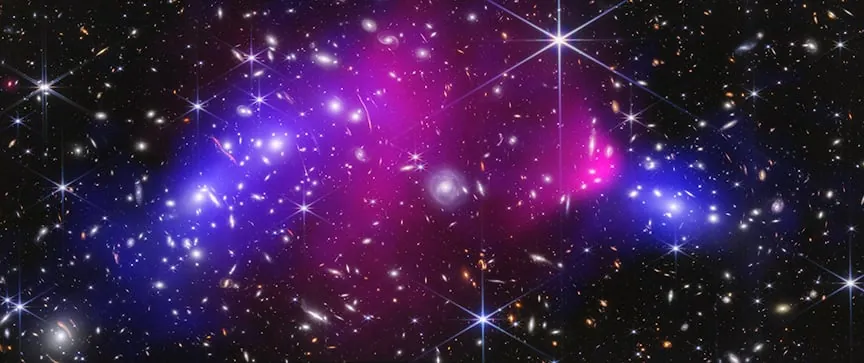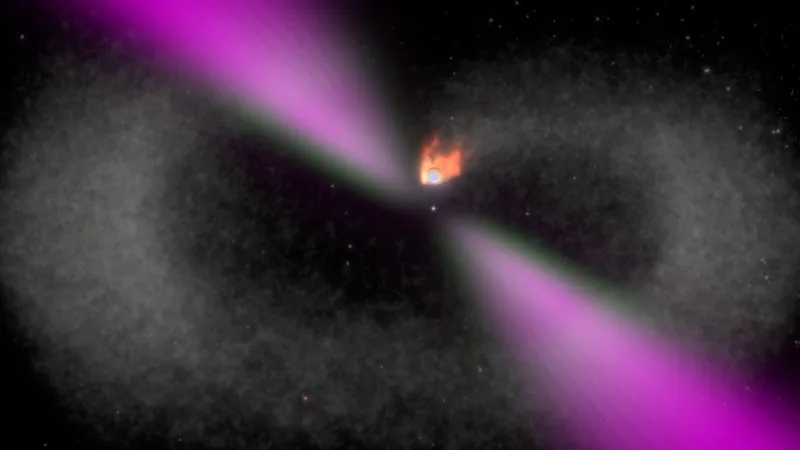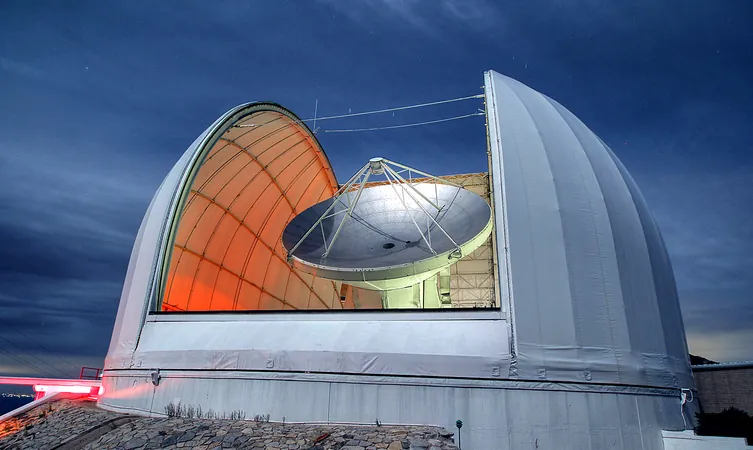
Secrets of the Universe: Webb Telescope Unlocks the Mysteries of the Bullet Cluster
2025-07-06
Author: Yu
A Cosmic Collision 3.8 Billion Light-Years Away
Deep in the heart of the cosmos, a spectacular collision unfolds nearly 3.8 billion light-years from Earth, nestled in the constellation Carina. Two colossal galaxy clusters, dubbed the Bullet Cluster, have clashed over billions of years, creating a breathtaking scene marked by heated clouds of gas and a tapestry of galaxies. This cataclysmic event is not just a visual marvel; it's a pivotal study in understanding dark matter, which constitutes the bulk of the cluster's mass.
Webb Telescope's Observations: A Game Changer
To further decipher the mysteries of the Bullet Cluster, astronomers turned to the powerful James Webb Space Telescope (Webb), renowned for its infrared sensitivity. Webb's detailed images provided an unprecedented look into the galaxies within the cluster and their surrounding structures, revealing hundreds of additional faint galaxies that remain elusive to other instruments. These observations have shed new light on the distribution of hot gas and dark matter within the cluster.
Mapping the Cosmos with Precision
Sangjun Cha, a leading astrophysicist, commented on the groundbreaking findings, stating, "With Webb’s observations, we measured the Bullet Cluster's mass with the largest lensing dataset to date, capturing the intricate dynamics from the core to the outskirts of the clusters." The telescope's perspective also illuminated distant galaxies hidden behind the cluster, further enriching our understanding of the cosmos.
A Closer Look at Hot Gas and Dark Matter
In the combined infrared and X-ray views captured by Webb and Chandra, scientists identified striking features—blobs of hot gas and a distinctive bow shock—created when the smaller cluster passed through its larger counterpart, heating the gas to millions of degrees and emitting X-rays. This phenomenon vividly demonstrates how dark matter behaves during cosmic collisions.
Dark Matter: The Invisible Force
While the stars within the clusters largely escaped harm, the collision dramatically separated hot gas from dark matter, revealing vital evidence of dark matter's existence. As the galaxy groups collided, they dragged gas away from its original position, highlighting the elusive nature of dark matter that only interacts through gravitational force.
Gravitational Lensing: A Cosmic Magnifying Glass
Although dark matter itself remains invisible, it acts as a colossal gravitational lens, distorting light from distant galaxies as it passes through. James Jee, a contributing researcher, compared this effect to water in a pond that magnifies objects beneath its surface. This unique lensing allows astronomers to infer the distribution of dark matter, which controls the location and movement of galaxies within the cluster.
New Findings and Future Exploration
With the data from Webb, scientists have not only pinpointed dark matter's location but also gained insights into its individual particle behavior. The findings indicate that dark matter particles operate independently beyond gravitational interactions, raising new questions about their composition. As researchers continue to study the Bullet Cluster, these discoveries could further unravel the complexities of dark matter, ultimately leading to a deeper understanding of the universe.
Concluding Insights: The Cosmic Puzzle
As we stand on the brink of astronomical breakthroughs brought forth by cutting-edge technology like the Webb Telescope, the Bullet Cluster remains a captivating subject that challenges our perceptions of the universe. Dive into these revelations and keep your gaze to the stars—there’s so much more to discover!


 Brasil (PT)
Brasil (PT)
 Canada (EN)
Canada (EN)
 Chile (ES)
Chile (ES)
 Česko (CS)
Česko (CS)
 대한민국 (KO)
대한민국 (KO)
 España (ES)
España (ES)
 France (FR)
France (FR)
 Hong Kong (EN)
Hong Kong (EN)
 Italia (IT)
Italia (IT)
 日本 (JA)
日本 (JA)
 Magyarország (HU)
Magyarország (HU)
 Norge (NO)
Norge (NO)
 Polska (PL)
Polska (PL)
 Schweiz (DE)
Schweiz (DE)
 Singapore (EN)
Singapore (EN)
 Sverige (SV)
Sverige (SV)
 Suomi (FI)
Suomi (FI)
 Türkiye (TR)
Türkiye (TR)
 الإمارات العربية المتحدة (AR)
الإمارات العربية المتحدة (AR)